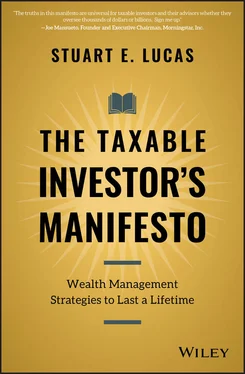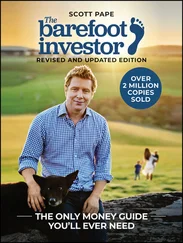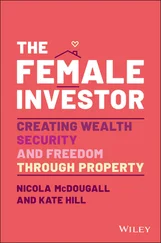I have a special group of thought partners that deserve acknowledgment too: my fellow faculty members in the University of Chicago's Private Wealth Management Program. We are now in our thirteenth year and John Heaton, Steven Kaplan, Sara Hamilton, and Howard Helsinger have co-taught every single program with me. I have learned a great deal from you, and a lot of that wisdom has found its way into the book. Steve has been a wise advisor on private equity and venture capital, as well as a personal mentor and advocate. Chapter 5of this book would not have been written if John Heaton hadn't sensitized me to the power and the math of time horizons. I'd been a long-term investor for decades and understood intuitively the effects of horizon on risk, but John provided the gateway to the statistical analysis. Howard Helsinger's way of teaching estate planning, integrating highly nuanced legal strategies in an envelope of human values and empathy, is extremely impactful. Sara brings to PWM more than 30 years of experience serving family offices through her firm, Family Office Exchange. In the very first PWM program in 2007, I was approached by José Ramón Sanz to develop a parallel curriculum in Spain. Ever since, we have had a wonderful intellectual and business partnership as well as a great friendship that has sprung from teaching and learning from wealthy Spanish-speaking families. It's from José Ramón that I became particularly sensitized to the issues, challenges, and opportunities of being a business-owning family over multiple generations.
Over the last two decades my clients at Wealth Strategist Partners have trusted me to implement the strategies that are revealed in this book. Of course, working with them, deliberating their insightful questions, managing with them through periods of stress and market volatility, helping them transition through liquidity events and from one generation to the next, have all been great opportunities for me to learn. Numerous private investors and family office executives have provided additional analysis and practical advice born of experience. The lens of learning what works through experience has no replacement; I am grateful for the partnerships that have made that experience possible.
My colleagues and business partners push me every day. To one degree or another you have all contributed to the ideas, the writing, and the editing of this book. You also were patient with me when I have been distracted by the enormity of this project. Thank you.
Thank you also to competitors and investment managers whom I've reached out to for help. You've given me valuable feedback and helped me to dig up relevant research, encouraging me along this path, and distributing the finished product to your colleagues, clients, and friends.
Thank you all for sharing the ride with me and contributing to the development of any wisdom that may appear in these pages. This book is as much yours as it is mine, but I will take responsibility for all the points you disagree with and for any factual mistakes. I hope I've done you proud.
I also wish to thank my editor, Bill Falloon, and Wiley, my publisher. They have been great partners and supporters of this project, providers of constructive feedback, and they moved expeditiously to bring this book to life.
Lastly, thank you to my family. My father and my late mother raised me right and helped me to flourish. My siblings and their spouses, especially Boutie and Melissa Lucas, are willing collaborators in our family enterprise. Some are engaged every day; the others hold us accountable in thoughtful, constructive ways. My children, nieces, and nephews are making their own way in the world, developing their own careers, and making their parents proud. This book would not exist without them being the people they are.
The best decision I ever made was to ask Susan to marry me thirty years ago. We are only just getting started. In addition to being the love of my life and my partner raising our three wonderful children, she has also been my business partner for ten years. A compassionate wonderful human being, she is also a highly gifted leader and businessperson. She supports me emotionally; she is a fantastic thought partner and an excellent editor. Her hands are all over this book. I truly am the luckiest guy in the world.
This is not a book about tax; it's about fomenting a quiet revolution. The Taxable Investor's Manifesto is your guide to maximizing profit from your financial assets over a lifetime and beyond. It's also a book about how to compete side by side against the majority of investors who don't pay tax. And it's about the skilled advisors who will help you manage your hard-earned wealth most effectively.
Taxable investors need to think differently. It's my experience; it's my mantra. It's the truth. And yet, try to find comprehensive guidance about personal finance that makes a serious stab at optimizing the combined effects of the money we earn, our investments, and the taxes we pay. It's darn near impossible, and I know where to look. I have spent 35 years in the investment and wealth management industries and received thorough academic and professional training.
The bottom line is that almost everyone who studies finance academically or advises us about our personal finances treats taxes as an afterthought, at best. It's very difficult for academics to access the diffuse data they would need to study our after-tax investment returns, so they don't. As a result, financial advisors haven't received sufficient training to optimize the returns to their taxable clients. In addition, the metrics that academia and the financial industry have developed to assess performance are designed without consideration of tax impact. When proper metrics don't exist, firms don't have the tools to monitor and incentivize their advisors to reduce our tax bill, and we have a hard time understanding what we are missing. These omissions are all rational given the current circumstances. But they come at a large cost. If academics, advisors, training program designers, and taxable clients all pull together, we can change the wealth management industry for the better.
Why should we care? For starters, the right advice is worth a great deal of money; to the tune of $5 million on an initial $1 million investment. That's good for clients and it's good for the fee base on which advisors earn their living. Let me explain. Unbeknown to me, a sophisticated investor who read a draft of this manifesto modeled the likely after-tax profit over 30 years on a $1 million initial investment under two scenarios. First, he modeled his existing portfolio of cash, fixed income, hedge funds, and actively managed equities. Roughly 60% of the portfolio was in equities. Second, he modeled a portfolio using the manifesto's strategy. With the same assumptions for market returns and for tax rates, using his current strategy the portfolio grew to about $4 million over 30 years; using the manifesto's strategy, $9 million, after tax. I was shocked by the difference. I knew it would be big, but until then I hadn't done the math. So I hired an analyst to build his own model. The answer was similar. A $5 million difference; that's why investors should care and that's why their advisors should care. Their interests are aligned to maximize after-tax returns. By the way, whether you start with $100,000 or $10 million, or even a billion dollars, the benefits are proportional. Is that potential impact worth a few hours of your time? Make your own assumptions. Do your own math. You will see the difference.
What are the underlying sources of that huge difference, and why is the difference so much larger than if a tax-exempt investor employed the same model? Shifting to a more equity-heavy portfolio benefits both types of investor, because over the long run equities have outperformed bonds, cash, and most hedge funds. But for the taxable investor the impact is much more profound. Because of the nature of our tax system, most of the profits on fixed income and hedge funds are taxed each year, and they are taxed at higher rates. Managing equities in a tax-efficient way enables investors to defer the payment of taxes for years and years, sometimes decades. A properly structured investment portfolio reduces tax drag and dramatically increases the power of compounding. The combination of equities, time, tax efficiency, and compounding can be worth millions.
Читать дальше












